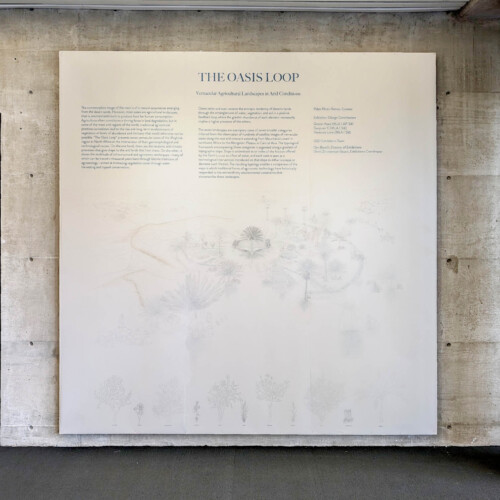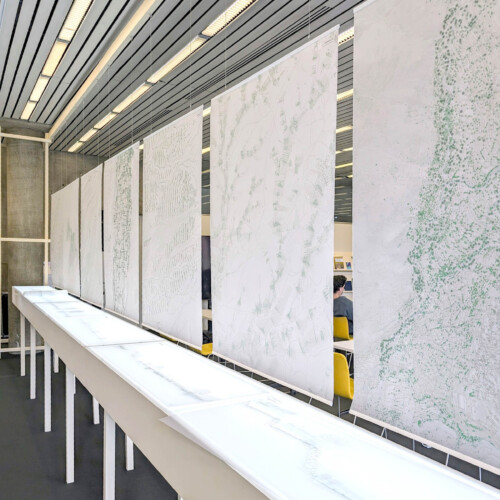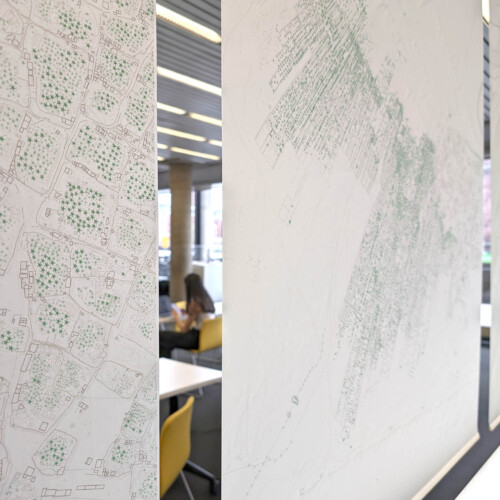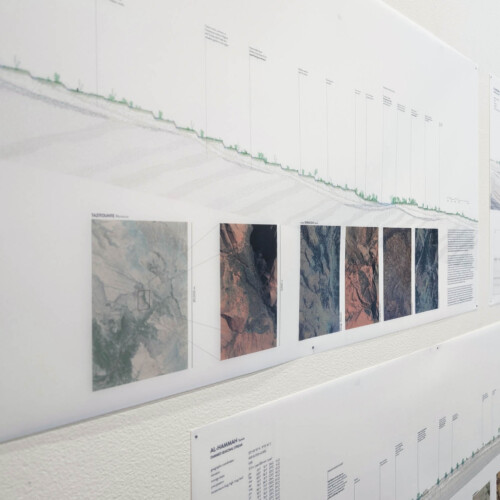The Oasis Loop: Vernacular Agricultural Landscapes in Arid Conditions
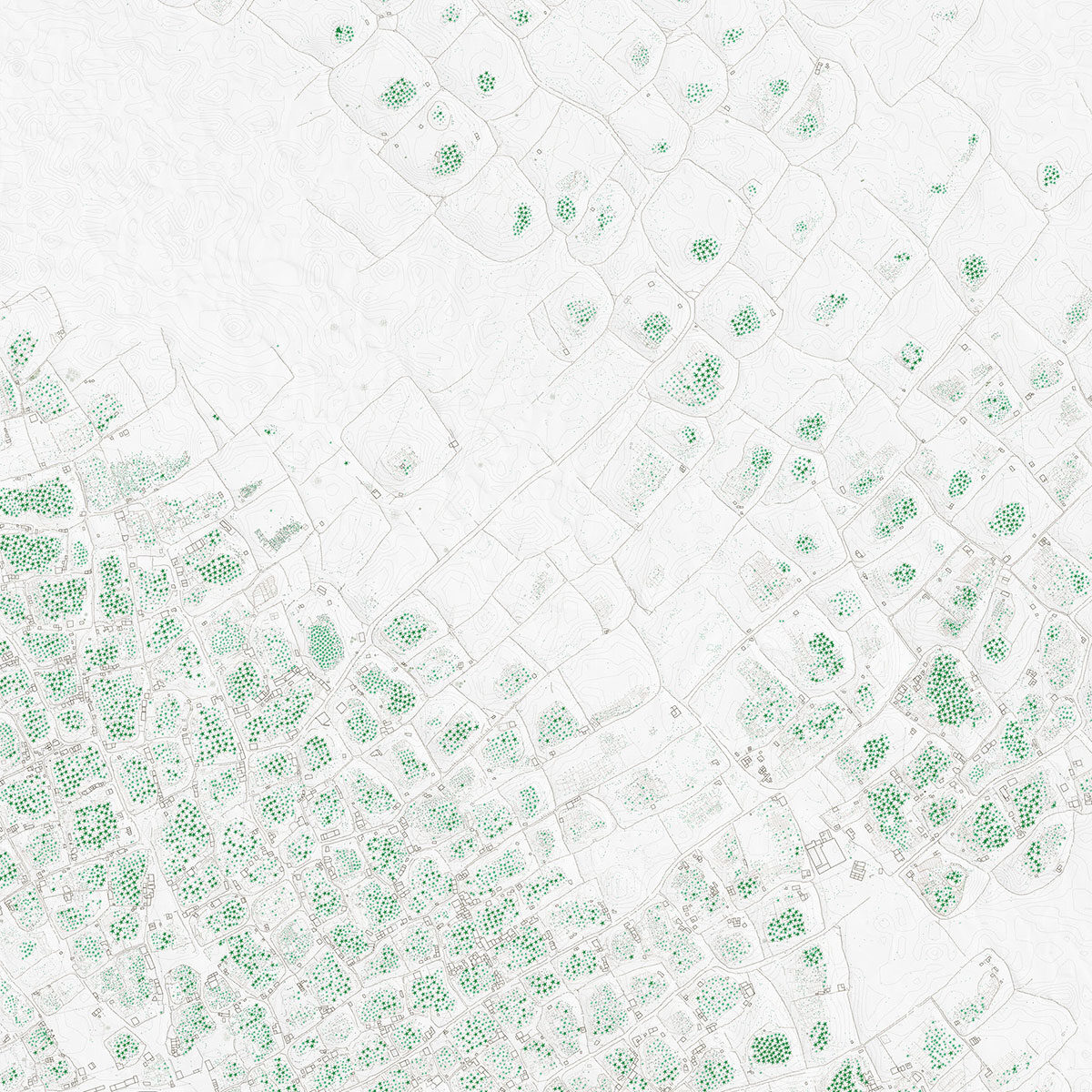
The commonplace image of the oasis is of a natural occurrence emerging from the desert sands. However, most oases are agricultural landscapes, that is, environments built to produce food for human consumption. Agriculture often constitutes a driving force in land degradation, but in some of the most arid regions of the world, traditional agricultural practices sometimes lead to the rise and long-term establishment of vegetation at levels of abundance and intricacy that would otherwise not be possible. The Oasis Loop presents seven vernacular oases of the Maghreb region in North Africa at the intersection of their geomorphological and technological causes. On the one hand, there are the tectonic and climatic processes that give shape to the arid lands that host them. On the other, it shows the multitude of infrastructural and agronomic techniques – many of which can be traced a thousand years back through Islamic traditions of agroecology – aimed at increasing vegetation cover through water harvesting and topsoil conservation. Oases resist and even reverse the entropic tendency of desertic lands through the entanglement of water, vegetation, and soil in a positive feedback loop where the greater abundance of each element necessarily implies a higher presence of the others.
The seven landscapes featured in the exhibition are exemplary cases of seven broader categories inferred from the observation of hundreds of satellite images of vernacular oases along the vast arid crescent extending from Mauritania’s coast in northwest Africa to the Mongolian Plateau in Central Asia. The typological framework encompassing these categories is organized along a gradient of topographic slope. Slope is understood as an index of the friction offered by the Earth’s crust to a flow of water, and each oasis is seen as a technological intervention introduced on that slope to either increase or decrease such friction. The resulting typology enables a comparison of the ways in which traditional forms of agronomic technology have historically responded to the extraordinary environmental constraints that circumscribe these landscapes.
CREDITS:
Pablo Pérez-Ramos, Curator
Exhibition Design Contributors:
Gracie Meek (MLA I AP ’24), Tianyuan Yi (MLA I ’24), and Florencia Lima (MLA I ’24)

